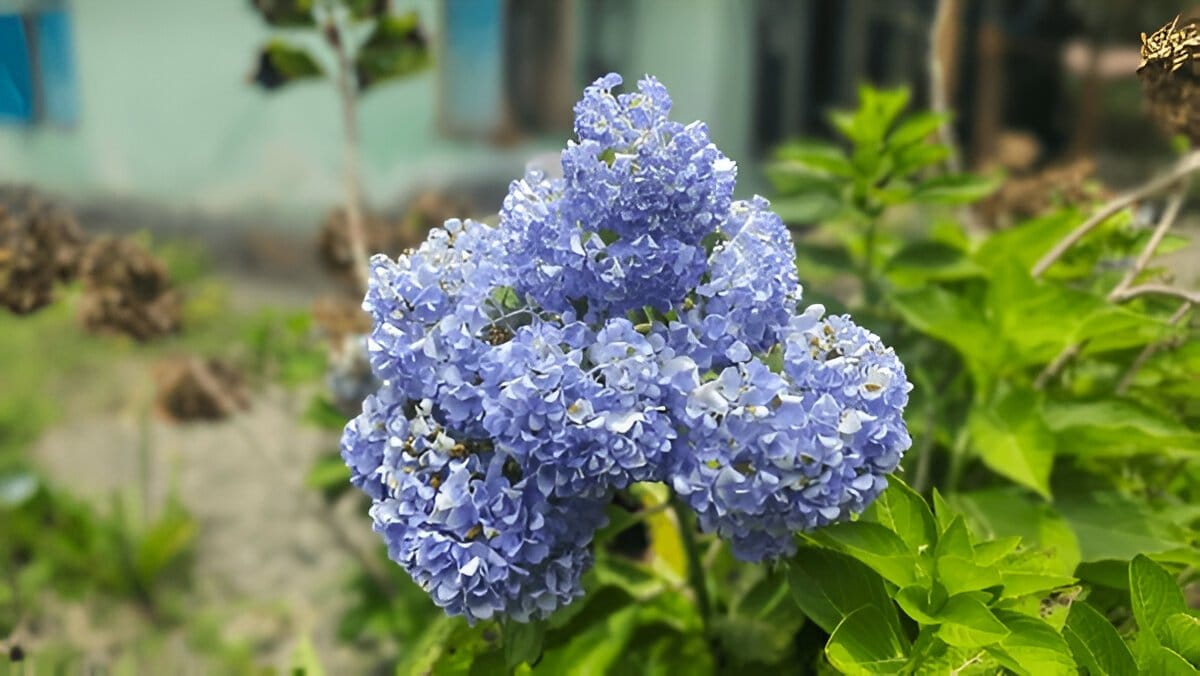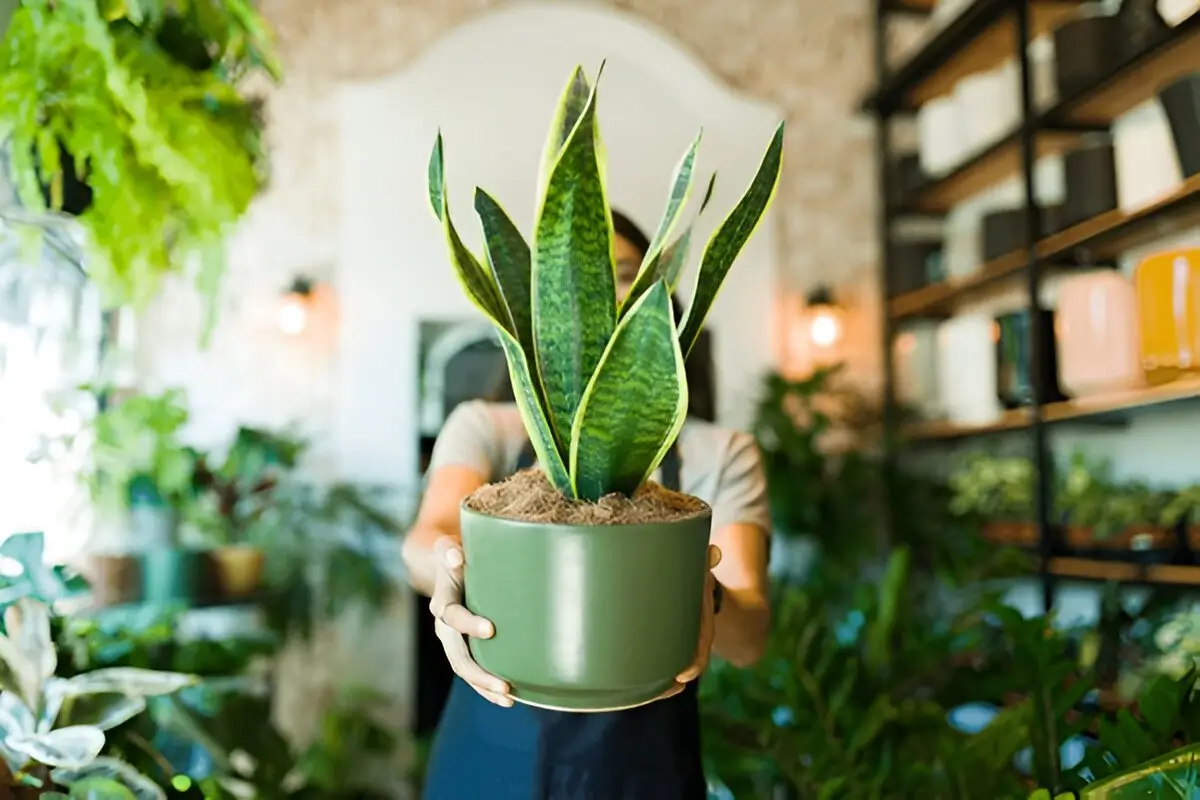how to care blue hydrangeas at home
Discover the beauty of blue hydrangeas and turn your garden into a colorful paradise. This guide offers seven tips to grow stunning blue hydrangeas. You’ll learn about their special qualities, how to prepare the soil, and how to care for them.
With these tips, you’ll be able to grow vibrant blue flowers. They will be the highlight of your garden, attracting everyone’s attention.

Understanding the Captivating Blue Hydrangea
The blue hydrangea is truly captivating, drawing in gardeners and nature lovers. These flowers come in different forms, like the classic bigleaf hydrangea and the elegant lacecap hydrangea. Each variety brings its own charm, showing the wide range in the blue flowering shrubs family.
Varieties of Blue Hydrangeas
The blue hydrangea has many popular types, such as the bigleaf hydrangea and the lacecap hydrangea. The bigleaf hydrangea has large, round flowers that stand out in any garden. The lacecap hydrangea, with its delicate, lace-like hydrangea flowers, adds a touch of elegance.
The Meaning Behind Blue Hydrangea Flowers
The blue hydrangea holds a special meaning for many. Its flowers symbolize sincerity, gratitude, and a desire for deeper understanding. These blue hydrangea flowers can express deep emotions, making them perfect for gardens or floral arrangements.
By embracing the charm and meaning of the blue hydrangea, gardeners can create a magical space. Whether you like the bold bigleaf hydrangea or the delicate lacecap hydrangea, these hydrangea flowers will surely captivate and inspire.
Choosing the Perfect Location
When it comes to growing beautiful blue hydrangeas, the location is key. These stunning blue flowering shrubs need the right spot to thrive. Knowing their needs helps you create a perfect blue garden oasis.
Blue hydrangeas love lots of sunlight. They do best in a spot that gets at least 6 hours of direct sun each day. Even though they can handle some shade, more sun makes their blue hues pop.
The soil must be just right too. Blue hydrangeas need well-draining, acidic soil with a pH of 5.5 to 6.5. If your soil is too alkaline, they might not get the nutrients they need to bloom in blue flowers.
When planting, remember the size of your blue hydrangea variety. Leave enough space for them to grow. A good rule of thumb is to space them 4 to 6 feet apart. This lets them get air and prevents them from getting too crowded.
- Ample sunlight (at least 6 hours per day)
- Well-draining, acidic soil with a pH of 5.5 to 6.5
- Appropriate spacing (4 to 6 feet between plants)
By picking the right spot and meeting your blue hydrangeas‘ needs, you’ll grow a stunning display. Your outdoor space will be filled with vibrant blue garden plants.
Preparing the Soil for Blue Blooms
Growing blue hydrangeas needs the right soil pH. These flowers love acidic soil to keep their blue color. We’ll look at why acidic soil matters and how to amend your garden’s soil for the best pH.
Acidic Soil Requirements
Blue hydrangeas need a soil pH between 5.5 and 6.5 to show their blue color. If the soil is too alkaline, they might turn pink or purple. Keeping the right soil pH is key for these plants to bloom in blue.
Amending Soil for Ideal pH Levels
If your soil isn’t acidic enough, you can amend it for your blue hydrangeas. Here are some ways:
- Use sulfur or aluminum sulfate to lower the pH
- Add peat moss, compost, or pine needles to make it more acidic
- Stay away from lime or other alkaline stuff that can raise the pH
By preparing your soil right, you’ll get stunning blue hydrangea blooms. Your neighbors will be jealous.
Planting Your Blue Hydrangea
Planting your blue hydrangea is key to its health and beauty. Choose a spot in your garden that gets the right sunlight and has good drainage. The hole’s depth and spacing are also crucial.
For depth, dig a hole twice as big as the root ball. This lets the roots spread and grow strong. Space your blue hydrangea 4 to 6 feet from other plants for enough room to grow.
- Gently remove the hydrangea from its container, being careful not to damage the delicate roots.
- Place the root ball in the prepared hole, making sure it’s level with the surrounding soil.
- Backfill the hole with the original soil, tamping it down gently to eliminate any air pockets.
- Water the plant thoroughly, ensuring the soil is evenly moist but not waterlogged.
With proper planting, your blue hydrangea will thrive. It will add beautiful color to your garden. Remember, patience and care are essential for a healthy hydrangea.
Watering and Fertilizing Blue Hydrangeas
To keep your hydrangeas blue, you need to pay attention to how you water and fertilize them. Knowing what they need will help your blue hydrangeas grow well and show off their beautiful colors.
Proper Hydration for Vibrant Blues
Blue hydrangeas love water and need it often to keep their flowers bright. Water them deeply, so the soil stays moist but not too wet. When it’s hot and dry, you might need to water them more to stop the leaves from drying out.
Water your blue hydrangeas in the morning or evening when it’s cooler. This helps the soil stay moist longer. Check the soil often and adjust how often you water to keep your blue hydrangea flowers looking great.
Feeding for Flourishing Hydrangea Flowers
Blue hydrangeas also need the right food to stay healthy and colorful. Feed them in early spring with a special fertilizer that’s acidic and slow-release. This gives them the nutrients they need for beautiful blue hydrangea flowers.
Don’t overfeed your hydrangeas, as too much fertilizer can hurt their flower production. Use the fertilizer as directed and only when needed. This way, your blue hydrangea plants will get the right amount of nutrients for growth and hydrangea flower development.
Pruning and Grooming Blue Hydrangea Shrubs
To keep your blue hydrangea shrubs looking great, you need to prune and groom them right. This care helps your blue hydrangeas shine with their beautiful blue colors every year.
When and How to Prune Blue Hydrangeas
The best time to prune your blue hydrangeas is in late winter or early spring. This is before new growth starts. It lets the plant heal and focus on making stunning blue flowers.
Start by cutting off any dead, damaged, or sick stems. Use sharp pruning shears and cut just above a healthy bud or stem. Don’t cut too close to the plant’s base, as it can harm the shrub.
To get more flowers, cut back the old growth by one-third to one-half. This helps the plant grow strong and produce lots of blue flowers.
- Prune in late winter or early spring before new growth appears
- Remove dead, damaged, or diseased stems
- Cut just above an outward-facing bud or healthy stem
- Prune by cutting back the previous year’s growth by one-third to one-half
By following these pruning tips, your blue hydrangea shrubs will stay healthy and full of vibrant blue flowers.
Protecting Your Blue Hydrangeas
To keep your hydrangeas looking their best, you need to watch them closely. These beautiful blue plants add a lot to your garden. But, they can face problems that harm their health and look.
Pests like aphids, mealybugs, and Japanese beetles can harm your plants. Check your plants often and use natural pest control. Keeping them watered and healthy helps fight off pests.
Diseases can also hurt your hydrangeas. Problems like powdery mildew and fungal infections can damage them. Make sure they have good air flow and don’t overcrowd them. Remove any sick parts quickly to stop the disease from spreading.
- Protect your blue hydrangeas from extreme weather conditions:
- Extreme heat can burn the leaves and make the flowers wilt early. Give them shade in the afternoon or use a sunshade.
- Harsh winter winds can hurt the stems and buds. Wrap them in burlap or use a plant protector to keep them safe.
- Heavy snowfall can break the branches. Gently remove snow to avoid damage.
By watching your plants and using the right protection, they will stay beautiful. Your blue hydrangeas will make your garden lovely for many years.
Blue Hydrangea: The Crowning Jewel of Your Garden
Discover the beauty of blue hydrangeas and make your garden stand out. These flowers can turn any outdoor area into a stunning oasis. They’re perfect for making your garden the highlight of the neighborhood.
Blue hydrangeas are eye-catching and can brighten up any space. They add charm to patios and flower beds. These blue flowering shrubs will grab everyone’s attention.
Use blue hydrangeas to create stunning floral arrangements. They look great with other flowers, making displays that amaze everyone. Imagine the joy of a garden party with your hydrangea flowers as the main attraction.
Let the blue hydrangea be the star of your garden. It can enhance your outdoor space in many ways. Let the beauty of your garden shine with blue hydrangeas.
Conclusion
By following the seven insightful tips in this guide, you now know how to grow stunning blue hydrangeas. You can pick the best spot and prepare the soil. You also know how to care for and protect them.
These tips are great for both new and experienced gardeners. They help you grow blue hydrangeas that will make your garden stand out. Let your blue hydrangeas add beauty to your garden for years.
With the right methods and some effort, you can enjoy blue hydrangeas in your garden. Start growing these amazing flowers and make your garden a colorful haven. Enjoy the beauty of blue hydrangeas in your garden.
FAQ
What are the different varieties of blue hydrangeas?
There are two main types of blue hydrangeas. The bigleaf hydrangea has large, rounded flowers. The lacecap hydrangea has a delicate, lace-like look.
What is the meaning behind blue hydrangea flowers?
Blue hydrangea flowers mean sincerity, gratitude, and a desire for deeper understanding. Their blue color brings feelings of calm and peace.
What type of soil do blue hydrangeas prefer?
Blue hydrangeas love acidic soil, with a pH of 5.2 to 5.5. To grow vibrant blue hydrangeas, add organic matter and adjust the soil’s pH.
How much sun do blue hydrangeas need?
Blue hydrangeas like partial shade to full sun, depending on your area. In hot places, they might need afternoon shade to stay healthy.
When is the best time to prune blue hydrangeas?
Prune blue hydrangeas in late winter or early spring. This helps keep the plant healthy and encourages more flowers.
How can I protect my blue hydrangeas from pests and diseases?
Check your blue hydrangeas often for pests or diseases. Use organic pesticides or fungicides if needed. Good soil and watering also help prevent problems.
How can I use blue hydrangeas in my garden design?
Blue hydrangeas are great for garden beds and borders. Create a hydrangea garden or use them to beautify your landscape. Plant them as specimen plants, in groups, or in containers.
RELATED POSTS
View all



